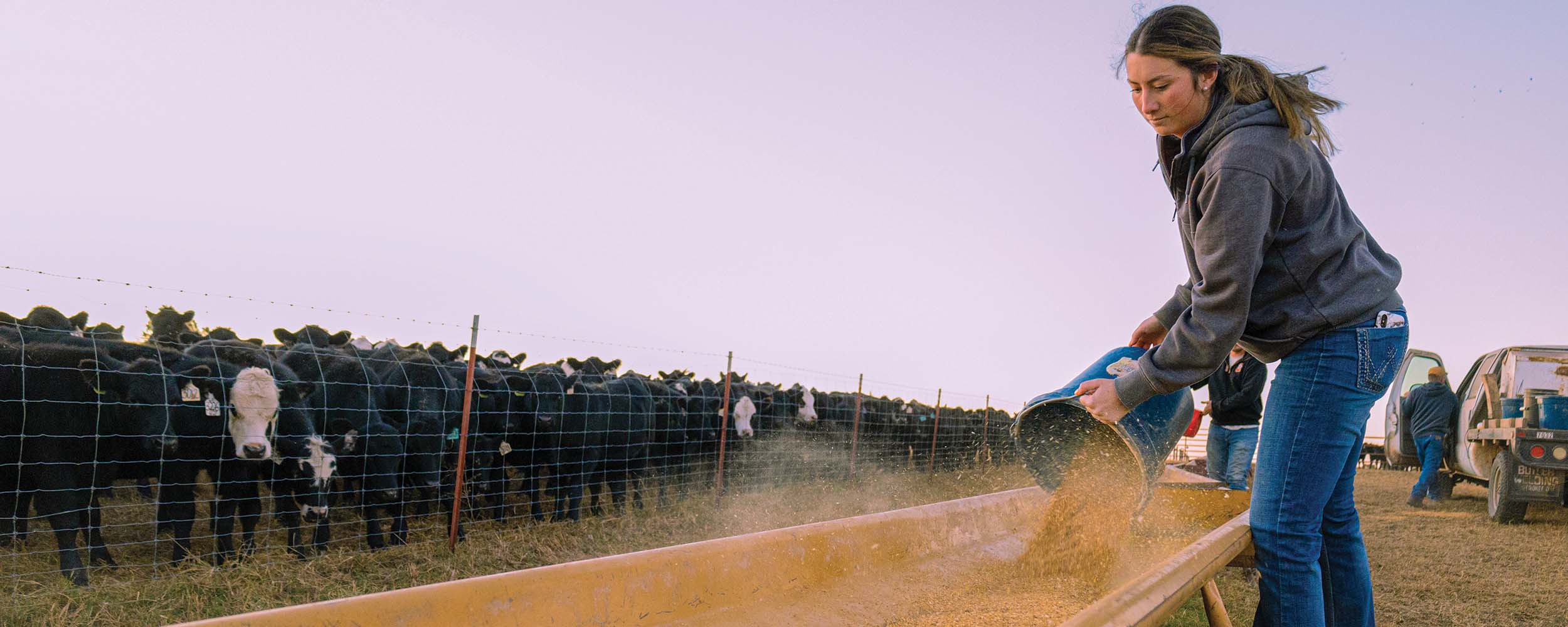
Growing the Future
Friday, January 5, 2024
Media Contact: Sophia Fahleson | Digital Communications Specialist | 405-744-7063 | sophia.fahleson@okstate.edu
Technological advances and breeding for higher growth and carcass traits have allowed producers to raise their cattle to higher weights at faster rates.
Every event of life stems from a mother, said Janeen Salak-Johnson, associate professor in the Oklahoma State University Department of Animal and Food Sciences.
“Everything that mom experiences her progeny experience, too,” Salak-Johnson added.
Now, animal and food sciences faculty are investigating the impact on beef cattle immune responses and robustness traits when these cattle are bred for high growth and carcass yielding traits.
“Within the beef industry, we’ve had decades of selections for growth and economics with really intensive selection for carcass quality in the last 10 to 20 years,” said Paul Beck, OSU Extension specialist for beef nutrition in animal and food sciences and primary investigator on this research. “With that, we have had increases in technology to really impact growth rates and carcass weights.
“We are getting calves to heavier weights at younger ages,” Beck added. “Even though we have cattle that are preconditioned and they have all their shots, they are getting sick, but it is not in the first two to three weeks of the receiving period. It is later on into the finishing period.”
Salak-Johnson, Beck and their team of graduate students have monitored four herds of crossbred Angus cattle at the OSU north and south cattle research ranges. By taking tissue, blood and serum samples, they can study the immune phenotype of the calves.
“It all starts at branding at 3 to 4 months of age,” said Alexis Main, doctoral student in animal and food sciences. “Then, we test them again at weaning at 6 to 7 months of age and then 14 days post-weaning. Finally, we test 60 days post-wean when they move into the feedlot and then 28 days post-feedlot.”
Raising these cattle from birth and testing them periodically throughout their lives allows Beck’s team to create a real-world experience and track the genetic material behind these calves’ responses to stress.
Beck’s team is learning how natural stressors throughout a calf’s life affect its growth and resilience abilities.
“In putting this project together, we decided we would never have enough animals nor enough data coming from our select crossings to look just at bovine respiratory diseases or response to disease, morbidity, or mortality,” Beck said. “We wanted to dig into the immunology and define some robustness traits to see what we can change.
“If these growth performance traits are associated with reduced robustness or resiliency or if they’re not, then we can select growth, carcass and immune response,” he added.
The team uses genomic testing to obtain the research data from the calves. With one single genomic test, the team can have data that normally requires 10 progenies to test from a sire, said Chris Johnson, doctoral student in animal and food sciences.
“Genomic testing is essentially comparing the genes of that specific animal back to a big database,” Johnson said. “We use that data to figure out the optimal animal to use.”
As the beef industry continues to expand and move toward more efficient cattle, Salak-Johnson said she believes cattle will continue to be less resilient and more prone to various immunity challenges.
“When we started selecting for high growth or fast growth, the initial tradeoff is these animals become more susceptible to stress and have a dampened immune response,” Salak-Johnson said. “When you select for a specific genotype, you are altering robustness traits, which are the traits needed for wellness.”
Environmental factors and manmade factors, such as weaning, handling or vaccinating cattle, can cause a stress response and an immune response, Main said. The combination can lead to reduced protection.
“An immune response takes a lot of energy,” Main said. “If you have animals selected for high growth, they could be diverting their energy toward an immune response.”
As a result, they will not have as robust of an immune response, she said.
“If we can motivate cow-calf producers to focus on the longevity of the calf and how they will perform in the feedlot, whether it be a high growth bull or another trait they select for, we need to look at how we can improve the industry as a whole,” Johnson said.
“We are striving to connect genes back to the immune competency of these calves since we know the dams, the sires and the history of those calves,” Johnson added. “We are working to figure out gene expressions during a stressor in response to a viral or bacterial infection.”
In the future, the team will be able to trace health response back through calves’ lineage, showing which cattle in a pedigree had similar immune responses and which traits are connected with a diminished immune response, Johnson said.
Story by: Matt Rosman | Cowboy Journal
